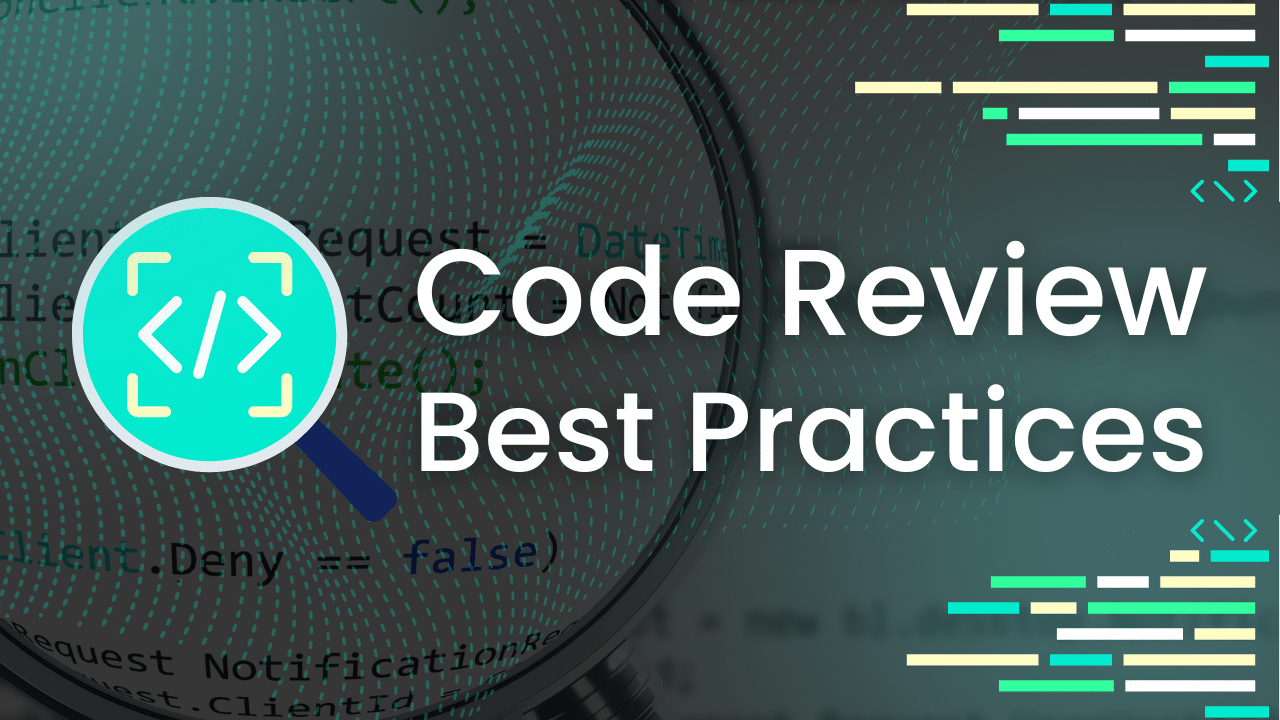*Cue infomercial voice* Has this ever happened to you? You’ve worked hard on a feature, run all your tests, and felt pretty good about it – until the review comes back. Next thing you know, you’re scouring through vague feedback and unclear comments like “this is confusing,” leaving you feeling frustrated that the review ever happened in the first place.
Bad code reviews can suck the motivation out of any developer. But when done right, code reviews are one of the most effective tools for boosting code quality, enhancing team collaboration, and fostering continuous learning.
In this article, we’ll cover practical strategies and tools to enhance your code reviews from a source of dread into a powerful feedback loop. Whether you’re the one writing the code or reviewing it, you’ll learn how to deliver clear, constructive feedback and avoid common pitfalls that can derail the process.
The Origin of Code Reviews
Long before modern dev teams were collaborating on GitHub, the idea of code review was already taking shape. In 1974, IBM researcher Michael Fagan formalized what we now recognize as code reviews. His process, known as “Fagan Inspections,” was created as a way to catch errors early, improve software quality, and foster collaboration.
Fast forward nearly five decades, and while the tools and methodologies have evolved, the core intent remains the same: ensuring code quality through structured feedback. What’s changed is the pace.
In Fagan’s time, reviews were formal, heavy on documentation, and involved multiple steps that could slow down a project. Today, they’re faster, more dynamic, and integrated directly into the development workflow, thanks to version control systems like Git and platforms like GitHub and GitLab. What used to take days or weeks can now happen in hours, allowing for more rapid iteration without sacrificing the goal of cleaner, more reliable code.
Since then, the purpose of code reviews – improving software quality, enhancing team collaboration, and sharing knowledge – has stayed the same, but can still feel burdensome with time-consuming tasks and poorly delivered feedback. It’s this balance between intention and execution that many teams continue to grapple with today, as they strive to make reviews both effective and efficient without losing sight of their core purpose.
How to Make Code Review Better?
1. Be Constructive, Not Critical
Developers often feel personally attacked when feedback lacks empathy, especially if the comments seem dismissive or harsh. (I mean, who wouldn’t?)
Thus, a constructive code review focuses on helping, not just pointing out mistakes. A simple switch from “This is wrong” to “What if we did this instead?” invites deeper conversation. At the end of the day, code reviews are about elevating the quality of the product and helping team members improve their skills – not simply pointing out mistakes.
Beyond tone and phrasing, the timing of feedback is crucial. Waiting too long to review code or leaving feedback just before a release can create unnecessary pressure and frustration. Constructive feedback should be timely, allowing the developer to apply the suggestions without feeling rushed.
Another crucial part of constructive reviews is focusing on the “why” behind the code rather than just the “what.” Reviews often get bogged down by nitpicking over syntax or minor issues without considering the bigger picture. A constructive review should dive deeper: What problem is the code solving? Is it the best solution given the constraints? This mindset shifts the conversation away from superficial concerns and promotes deeper thinking about the architecture and logic behind the changes.
Reviewers should also tailor feedback based on the developer’s experience level. For junior developers, code reviews are an opportunity to teach. Comments should be more explanatory, guiding them through better practices. For senior devs, feedback can be more focused on optimizations or architectural concerns.
Lastly, remember – peer review is not a one-way street. The reviewer should learn from the process as the reviewee. By reviewing someone else’s code, devs of all skill levels can gain insights into different approaches and methodologies they hadn’t considered.
2. Context is Key
Code reviews that focus purely on syntax or technical correctness miss the larger point – understanding the context behind the changes. A line of code might seem odd in isolation, but when seen as part of a larger system, its purpose becomes clearer. This is where many code reviews fall short, focusing solely on what’s in the diff without considering the bigger picture.
For example, say a developer submits a PR that rewrites a core function to optimize performance. If the reviewer only comments on code style or minor logic tweaks, they’re missing the forest for the trees. A constructive review would ask, “How does this change affect other areas of the system? Are there performance trade-offs elsewhere?”
Context also includes understanding the dev’s intentions. If the code change is part of a larger initiative or fixing a particular bug, the reviewer’s feedback should align with those goals. Instead of asking why something was done a certain way, reviewers should ask whether the approach makes sense in light of the overall objectives.
3. Keep Reviews Focused and Small
200 lines or 1,000 – ask yourself, which review would you rather dive in first? Odds are, anything more than 400 lines of code at once will likely decrease the reviewer’s efficiency and quality. It’s easy for crucial issues to slip through the cracks when reviewers are overloaded, so try to keep reviews small, focused, and manageable.
Keeping reviews small also benefits the person submitting the code. It allows for faster feedback loops, meaning issues can be addressed before they snowball into larger problems. It’s much easier to iterate on small changes than to overhaul a massive feature after receiving a mountain of feedback.
Plus, focused reviews let both the reviewer and the author engage in deeper discussions about the quality of the solution, rather than just ticking off checkboxes for correctness.
4. Leveraging Tools for Code Reviews
The right tools can make or break your code review process, and luckily, there’s no shortage of great options to choose from. GitHub, GitLab, and Bitbucket remain the go-to platforms for managing pull requests, with features like inline comments and side-by-side diffs that keep collaboration smooth and centralized. Plus, with their built-in CI/CD pipelines, reviewers can catch any failing tests before diving into the code itself.
GitKraken’s DevEx platform offers multiple tools that simplify and supercharge the way you work with Git. Plus, it seamlessly integrates with GitHub, GitLab, and Bitbucket, letting you pull in real-time updates and review changes with clarity. GitLens in VS Code offers historical context with in-line blame annotations, showing who made each change and why – perfect for adding more depth to your reviews while staying in your editor.
Automation also plays a huge role in making code reviews less tedious. Tools like ESLint and Prettier can handle syntax and style issues, ensuring that nitpicky formatting comments don’t clutter up your review. When combined with CI tools like Jenkins, CircleCI, or Travis CI, you can automate testing and catch potential issues early, allowing the review to focus on more critical aspects like architecture and performance.
Lastly, embracing Conventional Commits helps clarify the intent behind each change. Standardized commit messages give reviewers a quick snapshot of what’s being modified and why, helping to cut down on unnecessary back-and-forth.
Building a Culture of Continuous Code Review Improvement
Code reviews have the potential to be one of the most effective ways to boost both code quality and collaboration, but only if reviews are viewed as a chance to share knowledge and elevate everyone’s skills. A big part of building this type of culture is encouraging open conversations. Developers should feel comfortable explaining their reasoning and asking questions, while reviewers focus on understanding the “why” behind the decisions being made.
Another key to improving code reviews over time is learning from them. Patterns in feedback can reveal areas where the team might need more training or where coding standards could be tightened. Regularly revisiting these insights as a team and adjusting processes accordingly can help ensure that reviews are more about growth and less about criticism.
If you’re ready to improve your team’s code review process, download our Code Review Checklist. With it, you can keep reviews on track, standardized, and make feedback more constructive – all in the name of creating a culture of continuous improvement.
Frequently Asked Questions
1. What’s the purpose of a code review?
A code review is a process where developers evaluate each other’s code to identify errors, improve code quality, and enhance collaboration. Introduced by Michael Fagan in the 1970s, the purpose of a code review has remained the same: to catch bugs early, ensure consistent coding practices, and share knowledge across teams. Over time, code reviews have become essential in maintaining high standards and continuous improvement in software development.
2. What are the best practices for code reviews?
Adopting code review best practices ensures a smoother, more productive process. Start by keeping reviews small and manageable, provide constructive feedback focused on improvement, and make sure the review is timely. Tools like GitHub, GitLab, and GitKraken’s DevEx platform make collaboration easier, allowing for more effective code reviews.
3. How can I improve my code review process?
Improving your code review process involves both the right mindset and tools. Focus on context, not just code syntax, and ensure feedback is constructive rather than critical. You can also encourage team members from different roles, like QA and product managers, to join the conversation and bring in various perspectives.
4. What tools are best for code reviews?
Popular tools for code reviews include GitHub, GitLab, GitKraken Desktop, and SonarQube. GitLens for VS Code helps teams visualize commit histories, while GitKraken Desktop integrates directly with GitHub, GitLab, Azure DevOps, Jira, GitLab Issues, and more – making reviews easy in your preferred repo hosting service with built-in review features so you can collaborate across distributed teams.
5. What’s a code review checklist and why do I need one?
A code review checklist helps ensure consistent and thorough evaluations during the review process. By using a checklist, reviewers can focus on key areas such as functionality, performance, readability, and security. Having a structured approach also reduces missed issues and speeds up the review cycle. Get started with our Code Review Checklist and implement it to improve your team’s review efficiency.
Final Thoughts
Whether you’re fine-tuning a feature or launching a major update, making code reviews a productive experience sets your team up for success. So, as you tackle your next review, remember: focus on constructive feedback, keep context in mind, and leverage the tools at your disposal to simplify the process.
And if you’re looking to take your code reviews to the next level, be sure to download our Code Review Checklist for tips to keep your reviews consistent, actionable, and efficient.


 GitKraken MCP
GitKraken MCP GitKraken Insights
GitKraken Insights Dev Team Automations
Dev Team Automations AI & Security Controls
AI & Security Controls





